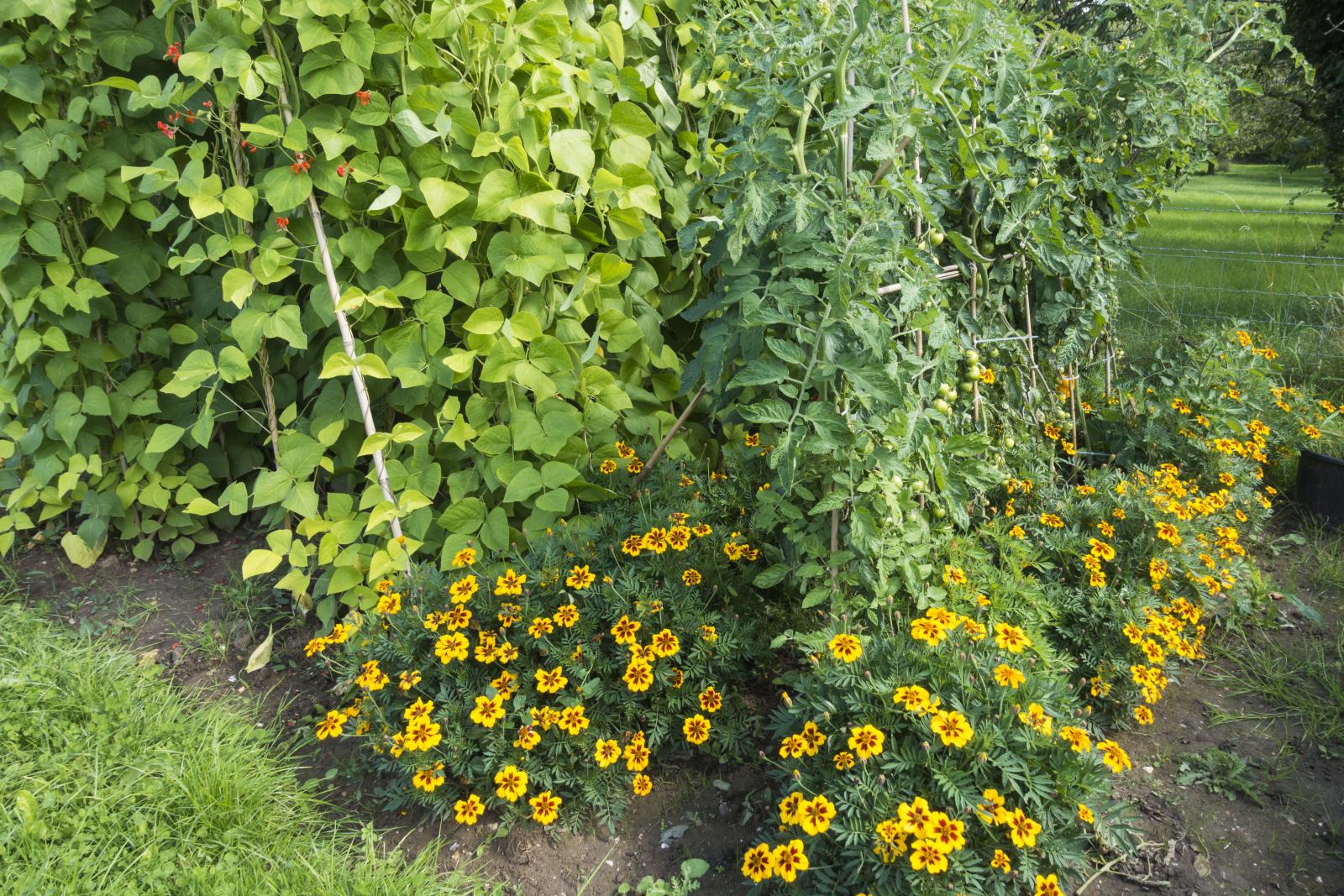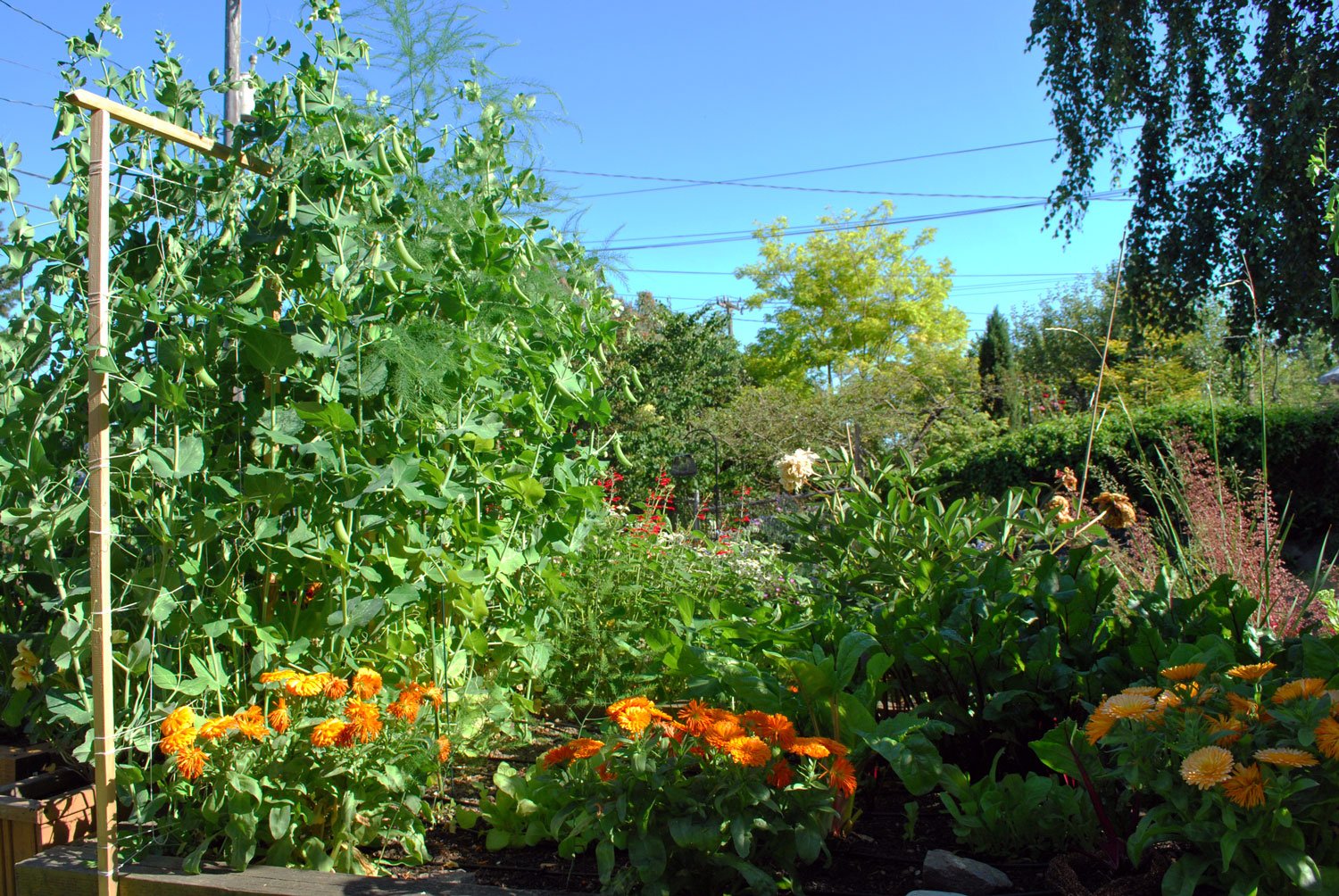Calendula: The Versatile Companion Plant That Will Improve Your Vegetable Garden
Calendula: The Versatile Companion Plant That Will Improve Your Vegetable Garden
Calendula, also known as pot marigold, is a beautiful and versatile flower that has been used for centuries in gardens and in traditional medicine. In recent years, calendula has become increasingly popular as a companion plant for vegetables.
There are many reasons why calendula is a great companion plant. First, it attracts beneficial insects, such as ladybugs, hoverflies, and parasitic wasps. These insects help to control pests, such as aphids, caterpillars, and whiteflies.
Second, calendula repels some pests, such as nematodes, tomato hornworms, and cabbage loopers. This can help to protect your vegetables from damage.
Third, calendula can improve the growth and health of your vegetables. It has been shown to increase the yield of tomatoes, peppers, and cucumbers. Calendula can also help to improve the flavor of your vegetables.
In addition to its benefits for vegetables, calendula also has a number of other uses. The flowers can be used to make tea, which is said to have anti-inflammatory and wound-healing properties. Calendula can also be used to make salves and creams for skin care.
If you are looking for a versatile and beneficial companion plant for your vegetable garden, calendula is a great choice. It is easy to grow and care for, and it offers a number of benefits for your plants.
Here are some of the specific ways that calendula can benefit your vegetable garden:
- Attracts beneficial insects. Calendula is a magnet for beneficial insects, such as ladybugs, hoverflies, and parasitic wasps. These insects help to control pests, such as aphids, caterpillars, and whiteflies.
- Repels pests. Calendula has a strong scent that some pests find unpleasant. This can help to repel pests, such as nematodes, tomato hornworms, and cabbage loopers.
- Improves the growth and health of vegetables. Calendula has been shown to increase the yield of tomatoes, peppers, and cucumbers. Calendula can also help to improve the flavor of your vegetables.
- Has medicinal properties. The flowers of calendula can be used to make tea, which is said to have anti-inflammatory and wound-healing properties. Calendula can also be used to make salves and creams for skin care.
How to Grow Calendula
Calendula is a relatively easy plant to grow. It prefers full sun and well-drained soil. Calendula can be started from seed or from transplants. If you are starting from seed, sow the seeds directly in the garden about 2 weeks before the last frost. If you are using transplants, plant them about 18 inches apart.
Calendula is a low-maintenance plant. It does not require a lot of water or fertilizer. However, it is important to deadhead the flowers regularly to encourage new blooms.
When to Harvest Calendula
Calendula flowers can be harvested when they are fully open. The petals can be used fresh or dried. To dry the petals, simply spread them out on a screen or a paper towel in a sunny spot. The petals will be dry when they are crisp and crumble easily.
How to Use Calendula
The petals of calendula can be used in a variety of ways. They can be added to salads, soups, and stews. They can also be used to make tea, which is said to have anti-inflammatory and wound-healing properties. Calendula petals can also be used to make salves and creams for skin care.
Conclusion
Calendula is a versatile and beneficial plant that can be used in a variety of ways. It is a great companion plant for vegetables, and it also has a number of medicinal properties. If you are looking for a beautiful and easy-to-grow plant that can benefit your garden in multiple ways, calendula is a great choice.
Calendula is a beautiful and versatile flower that can also be a valuable addition to your vegetable garden. In addition to its attractive blooms, calendula has a number of beneficial properties, including attracting beneficial insects, repelling pests, and improving soil health.
One of the best things about calendula is that it is a great companion plant for many vegetables. Some of the best companion plants for calendula include:
- Tomatoes: Calendula helps to repel tomato worms and other pests.
- Carrots: Calendula helps to improve the flavor of carrots.
- Asparagus: Calendula helps to repel asparagus beetles.
- Beans: Calendula helps to attract beneficial insects that help to pollinate beans.
- Cucumbers: Calendula helps to repel cucumber beetles.
If you are looking for a way to improve the health and productivity of your vegetable garden, consider planting calendula. For more information about calendula companion vegetables, please visit Gardenia Inspiration.
FAQ of calendula companion vegetables
Q: What are the benefits of planting calendula with vegetables?
A: Calendula is a beneficial companion plant for vegetables because it:
- Attracts beneficial insects: Calendula attracts beneficial insects such as ladybugs, lacewings, and hoverflies. These insects help to control pests such as aphids, spider mites, and whiteflies.
- Repels unwanted pests: Calendula also repels unwanted pests such as tomato worms, nematodes, and carrot flies.
- Improves soil health: Calendula is a nitrogen-fixing plant, which means that it helps to improve the soil's nitrogen content. This can benefit the growth of other vegetables.
- Discourages powdery mildew: Calendula is said to discourage the growth of powdery mildew, a common fungal disease that can affect vegetables.
Q: What vegetables are good companion plants for calendula?
A: Some of the best companion plants for calendula include:
- Beans: Calendula can lure aphids away from beans, and makes a great companion plant for runner beans and French beans.
- Carrots: Calendula can help to repel carrot flies, which can damage carrot roots.
- Cucumbers: Calendula can help to attract beneficial insects that help to control cucumber pests.
- Lettuce: Calendula can help to improve the flavor of lettuce.
- Tomatoes: Calendula can help to repel tomato worms and nematodes.
Q: How far apart should calendula and vegetables be planted?
A: Calendula and vegetables should be planted about 12 inches apart. This will give them enough space to grow and thrive.
Q: When should calendula be planted with vegetables?
A: Calendula can be planted with vegetables in the spring or fall. It is best to plant calendula after the last frost, but before the weather gets too hot.
Q: How do I care for calendula companion plants?
A: Calendula companion plants are relatively easy to care for. They need full sun and well-drained soil. Water them regularly, especially during hot, dry weather.
Image of calendula companion vegetables
5 different images of "calendula companion vegetables" from Pinterest:
- Image 1: Calendula and tomatoes. Calendula is a good companion plant for tomatoes because it helps to deter pests such as aphids, whiteflies, and nematodes.

- Image 2: Calendula and cucumbers. Calendula also helps to repel cucumber beetles, which can be a major pest of cucumbers.

- Image 3: Calendula and peas. Calendula can help to improve the growth of peas by attracting beneficial insects such as ladybugs and hoverflies.

- Image 4: Calendula and carrots. Calendula can help to improve the flavor of carrots by deterring carrot flies.

- Image 5: Calendula and asparagus. Calendula can help to improve the growth of asparagus by attracting beneficial insects such as bees and butterflies.

Post a Comment for "Calendula: The Versatile Companion Plant That Will Improve Your Vegetable Garden"